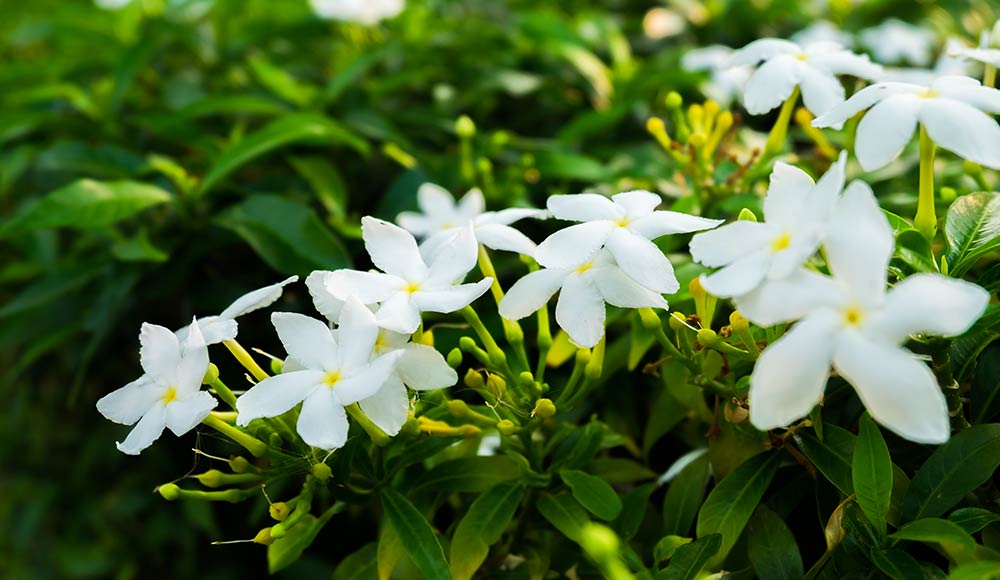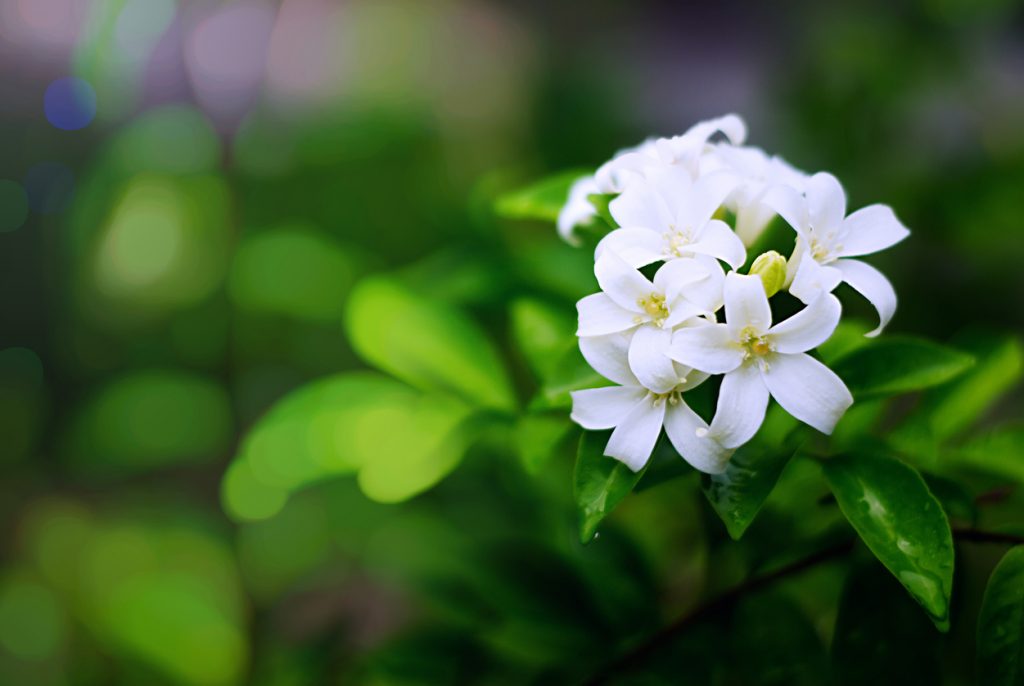Jasmine Profile
Written by Joy
Sep 27 2020

Jasmine, also known as Jasmine, is a general name for Jasminum evergreen shrub. It is native to India and Pakistan, but has been introduced and widely planted in China. Jasmine is the most common aromatic potted plant with green leaves, white colors and strong aroma in a warm, moist and sunny environment. Of the genus Jasminum, one of the most famous is Jasminum Sambac, commonly known as jasmine. Jasmine has good health and beauty effects, which can be used for diet. It symbolizes love and friendship. Meanwhile, Jasmine flower is also a traditional Chinese folk song. It is also used for the names of cartoon characters in the animation.


Jasmine is native to India and Arabia. Its central producing area is in the Persian Gulf. It is widely planted in the subtropical region. Mainly distributed in Iran, Egypt, Turkey, Morocco, Algeria, Tunisia, as well as Spain, France, Italy and other Mediterranean coastal countries. India and Southeast Asian countries are also cultivated. Athens, the capital of Greece with the name of the City of Jasmine. The Philippines, Indonesia, Pakistan, Paraguay, Tunisia and Thailand have regarded jasminum as their national flowers, together with their siblings, Hairy jasmine and Great jasmine.


Jasmine morphological characteristicsJasmine growth habit and growing environment and distributionJasmine efficacy and roleJasmine cultivationJasmine flower language
Jasmine morphological characteristics
Jasmine flowers, small evergreen shrubs or rattan shrubs, warm nature, frost-resistant. It can grow up to 1 meter high. Branchlets are angular, sometimes hairy. Leaves opposite, broadly ovate or elliptic, veins distinct, slightly wrinkled, petiole short and upward-curving, pubescent. In early summer, its new shoots are extracted from leaf axils.Jasmine growth habit and growing environment and distribution
Nature likes warm and moist, grows best in a well-ventilated, half overcast environment. The most suitable soil is the slightly acidic sandy loam which contains a great deal of humus. Most varieties are afraid of cold and drought, and are not resistant to frost, moisture and alkaline soil. In winter, when the temperature is lower than 3℃, their branches and leaves are vulnerable to frost damage. If the temperature lasts for a long time, they will die. And deciduous liana is very cold and drought tolerant. Suitable for planting in the warm south, it can be potted, adaptable, flowering in summer once a year.Jasmine is native to India and Arabia. Its central producing area is in the Persian Gulf. It is widely planted in the subtropical region. Mainly distributed in Iran, Egypt, Turkey, Morocco, Algeria, Tunisia, as well as Spain, France, Italy and other Mediterranean coastal countries. India and Southeast Asian countries are also cultivated. Athens, the capital of Greece with the name of the City of Jasmine. The Philippines, Indonesia, Pakistan, Paraguay, Tunisia and Thailand have regarded jasminum as their national flowers, together with their siblings, Hairy jasmine and Great jasmine.
Jasmine efficacy and role
It is mainly used for treating abdominal pain, eye swelling and pain, sores and poisons. Jasmine flowers can be extracted from lily flower oil, the main components of which are benzyl alcohol and its esters, jasmine flower, linalool and linalool benzoic acid. Besides, the roots contain alkaloids and sterols. Jasmine flowers, leaves and roots are used in medicine. With cool, clear heat and solution table, anti wetting effect.Jasmine cultivation
Potted jasmine flowers should be watered early or late every day in summer. If the air is dry, water should be sprayed with water. Winter dormant period, to control the amount of watering, like its pot soil is pretty wet, will cause rot root or jasmine flower propagation multi-purpose cuttage, also can layering or plant. Jasmine cutting propagation, starting from April to October. After choosing the selection of mature one-year branches, cut into a cuttings with more than two nodes, remove the lower leaves, and inserted in the sand each half of the cuttings,then overed with plastic film, and maintain high air humidity, about 40 to 60 days after rooting.Jasmine flower language
The jasmine flower is plain, rich, fragrant and everlasting. The language of its flowers stand for true love and friendship. In many countries, jasmine flowers are regarded as the flower of love. Young men and women send jasmine flowers to each other to express their firm love. It is also passed on among people as the flower of friendship.Latest Updated
- Benefits of Bugleweed - 7 Science-backed Health Benefits
- Bugleweed Dangers & Side Effects - Is It Poisonous?
- How to Plant Evergreen Trees - What You Should Know
- When to Plant Evergreens - Grow Guide for Evergreen Trees
- 12 Wonderful Evergreen Shrubs for Your Garden
- 12 Popular Evergreen Plants with Pictures for Beginners
- When And How To Prune A Lilac Bush Like a Pro
- How to Grow & Care for Lilac Vine (Hardenbergia Violacea)
- Japanese Lilac Tree (Syringa Reticulata) Care & Propagation Guide
- Shumard Oak Pros and Cons - What to Know
Popular Articles
- Winter maintenance of Antirrhinum Majus
- How to Grow Terminalia Mantaly Tree
- How to Grow and Care for Crossostephium Chinense
- How to grow Antirrhinum Majus in spring
- Peristeria Elata (Dove Orchid) Profile: Info & Care Guide
- Underwatered Snake Plant (Sansevieria Trifasciata) - Signs And How To Fix
- How to Care for Brazilian Jasmine Plant (Mandevilla Sanderi)
- How to Grow & Care for Graptopetalum Purple Delight in Summer
- Rosa Chinensis (China Rose): Plant Growing & Care Tips
- How to Care for Baby Sun Rose (Aptenia Cordifolia)